Look out MG, BYD, Ora! Hyundai Inster sub-$40,000 electric SUV in Australia next year
Hyundai has confirmed its electric Inster city SUV is coming to Australia in early 2025, with a likely sub-$40,000 price tag.
Unveiled today at Korea’s Busan International Mobility Show, the funky five-door four-seat baby SUV is offered with either a 42kWh 305km-range or 49kWh 355km-range battery option.
The Standard Range has 71kW and 147Nm from its front-mount single motor, while the Long Range delivers 85kW and 147Nm.
Acceleration figures aren’t shattering. The base Inster labours to 100km/h in 11.7 seconds, while the larger battery model achieves it in 10.6-seconds.
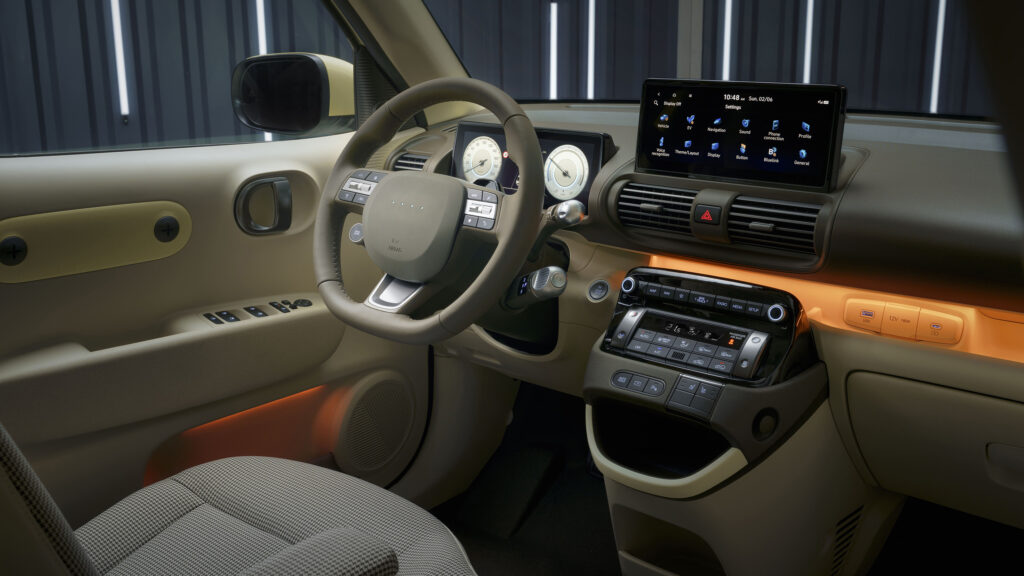
EVCentral’s on the ground at the Busan Show and we’ve had a good poke around the tiddly new Hyundai EV.
Its dimensions are a smidge larger than a combustion Suzuki Ignis SUV, but on first try, cabin packaging is excellent.
Like the larger Hyundai Ioniq 5, front row seating has walk-through access, and the tall ceiling and large windows give a spacious feel for a car this size.
A potential negative is just two rear seats, but these chairs are wide, reclining and slide on runners for decent versatility. Rear headroom’s very good and legroom handles 1.8m (six-foot tall) adults. But the boot’s titchy – from 280L to 351L depending on rear seat position.
All seats can be folded flat – including the driver’s – so if you’re brave, this city SUV offers tent-free camping.
Europe receives the Inster late in 2024, and Hyundai’s targeting a 25,000 Euro price there, translating to exactly $40,000. A start price below this must be Hyundai Australia’s target to properly challenge the glut of sub-$40,000 Chinese EVs.
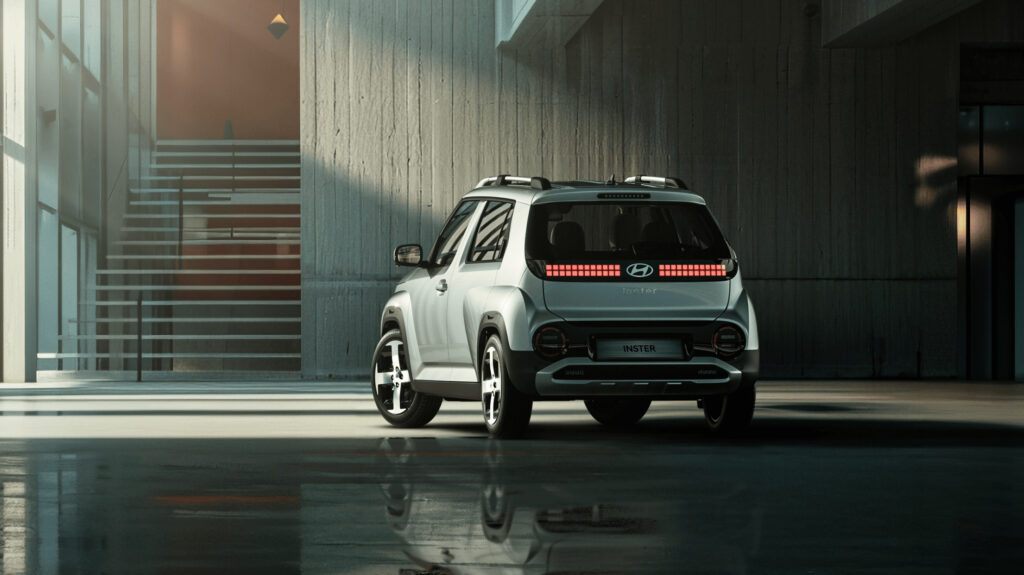
Considering the Inster’s base model inclusions (more on that below), it’s wishful thinking this Hyundai could challenge for title of Australia’s cheapest EV.
That honour’s currently held by GWM’s Ora at $35,990 drive away. Other key rivals include the BYD Dolphin ($36,890), MG4 ($39,990 drive-away) and MG ZS EV ($39,990 drive-away).
A segment of Aussie buyers will appreciate a more familiar and long-established brand like Hyundai finally giving an option in the sub-$40k EV segment.
Aside from Peugeot’s drastic and temporary discount to $39,990 drive-away for its e-2008 (the deal’s no longer offered) and desperate deals on the Nisan Leaf in days of yore, the Inster should be the first non-Chinese new EV with a price starting with the number 3 after the dollar sign.
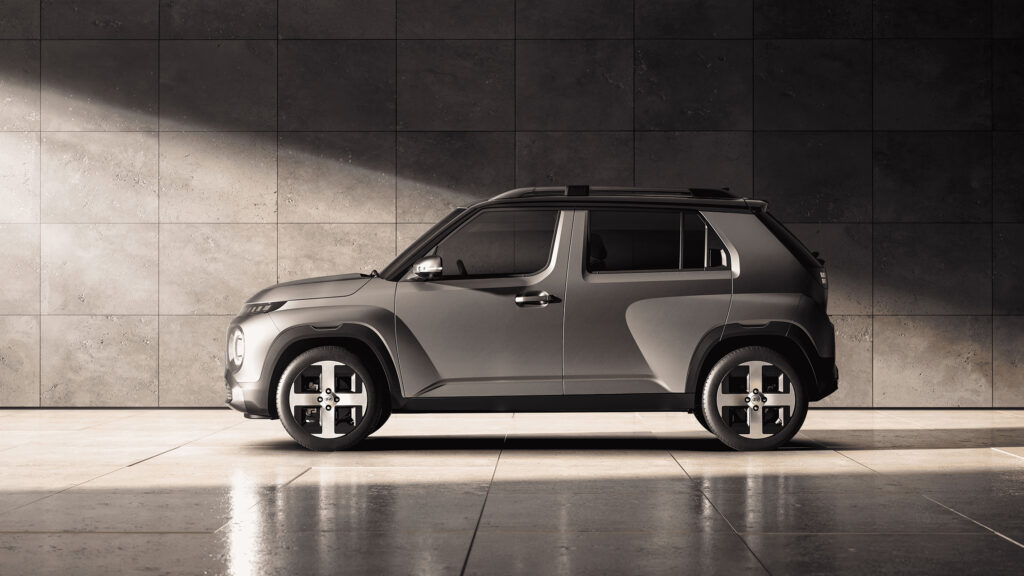
On first sample it feels fair value at that price. The dashboard arrangement and simple well-laid out buttons will be familiar to Hyundai owners, plus there’s solid technology even from entry-level.
A brace of 10.25-inch screens covers driver display and infotainment; front seats and steering wheel are heated, there’s navigation, wireless phone charger and a Porsche-like drive mode selector on the steering wheel.
Some of the cabin’s sustainable materials – including of recycled bottles and sugarcane – feel a bit thin and hard, and the cloth seats are comfortable if a bit basic.
READ MORE: Hyundai Tucson hybrid arrives, but priced higher than dominant rival Toyota RAV4 Hybrid
READ MORE: First pictures of Hyundai’s Inster compact electric SUV. Could this be Australia’s cheapest EV?
READ MORE: Spoiler alert: Sporty Hyundai Kona Electric N-Line priced in Tesla territory for Australia
We’re told two trim levels are coming to Australia, likely a base and Premium, and the latter means a real lift in cabin presentation, mainly due to cosy faux leather upholstery, ventilated seats and sunroof.
All Insters feature V2L functionality – there’s a 220V socket both inside and outside – for owners to charge or power an electric bike, laptop, coffee machine or camping equipment.
Safety includes radar cruise control, rear cross traffic collision avoidance, blind spot monitor, lane keep and a surround-view monitor.
The Inster’s an obvious EV target for empty-nesters, young professionals or for those seeking a zero-emissions second car for shorter journeys. Families of four could get away with it too, as long as you never need carry much in the boot.
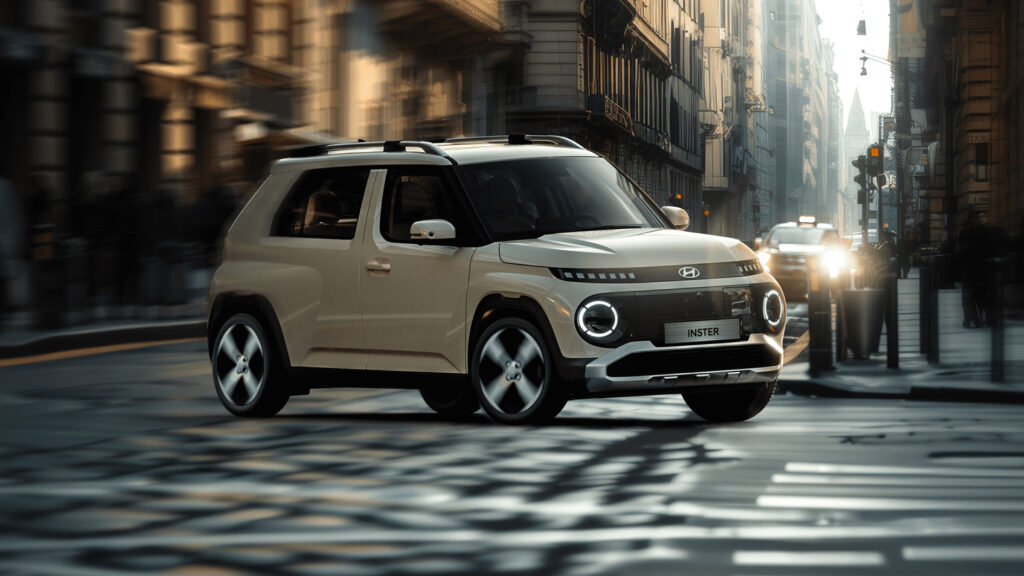
Design’s subjective, but Hyundai’s no stranger to acing desirable looks for its EVs (the Ioniq 6’s bum excluded), and the Inster’s a cute, appealing little thing in the metal.
It has giant circular LED daytime running lights, Hyundai’s EV-signature pixel graphic turn signals and a ‘circuit board-style bumper’ to go with a range of colours including Tomboy Khaki, Sienna Orange and Buttercream Yellow Pearl.
You can even go two-tone with a black roof if you wish.
It looks a bit under-tyred on 15-inch steel rims with covers (and optional 15-inch alloys), but these are the rollers needed to achieve those 305km and 355km range numbers. The Inster looks better on the higher grade’s 17-inch alloys, but we know there’s a range sacrifice with them, just not how much.
The interior can be had in a few colours too: black, brown and beige.
Complete details are still to be confirmed for Australia-bound Insters, but we’re assured both batteries charge from 10-80 per cent in 30 minutes when using a 120kW or higher public DC charger.
An 11kW on-board charger comes standard with the car for home and AC charging.
We’ll give a first drive test review on the potentially game-changing Inster in mid-August, well ahead of its arrival here in early 2025.

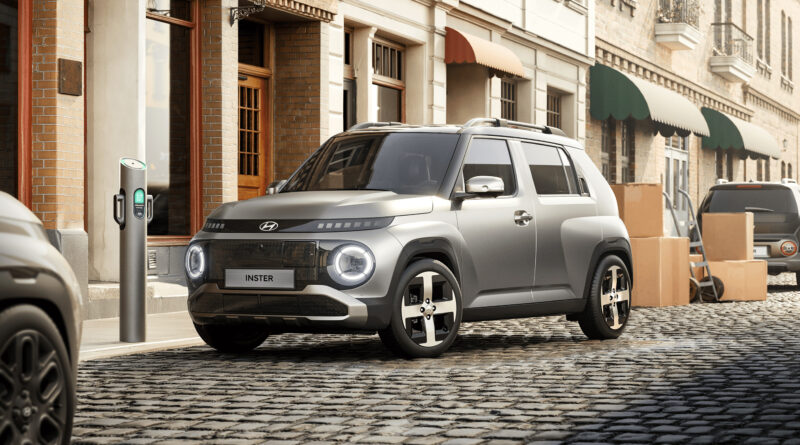
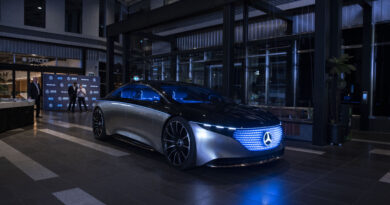
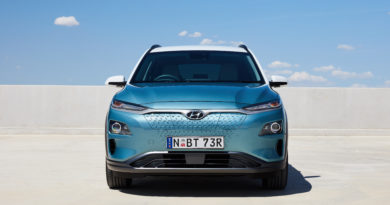
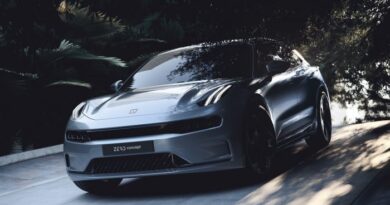
We need more of these “City” Ev’s on the road now and less gas guzzling Utes which are often used only for the school run/etc. Tighten up the tax incentives/breaks for Utes and introduce real incentives for
“City ” cars like the Japanese. Chris Bowen should wake up to the energy/environmental savings.